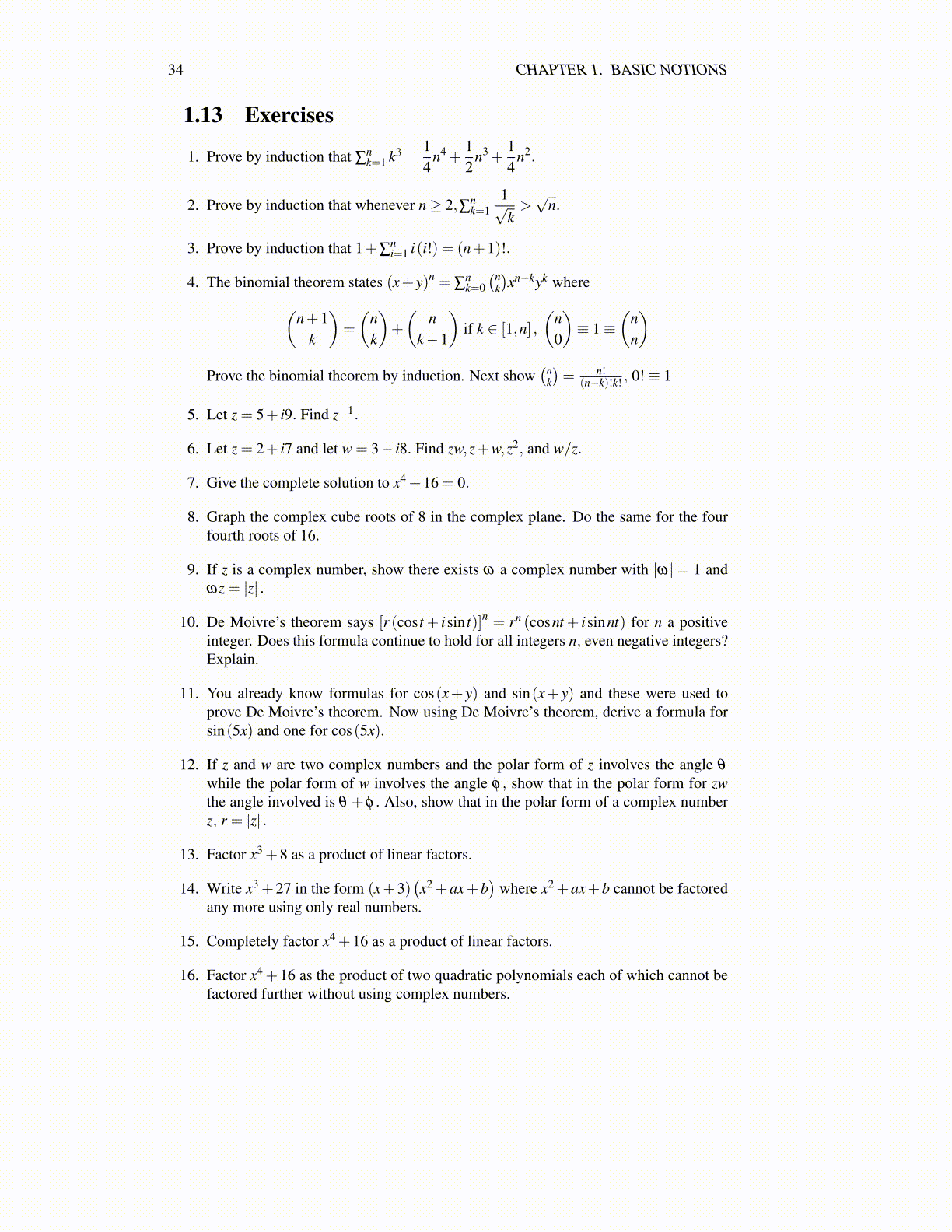
34 CHAPTER 1. BASIC NOTIONS
1.13 Exercises
1. Prove by induction that ∑nk=1 k3 =
14
n4 +12
n3 +14
n2.
2. Prove by induction that whenever n≥ 2,∑nk=1
1√k>√
n.
3. Prove by induction that 1+∑ni=1 i(i!) = (n+1)!.
4. The binomial theorem states (x+ y)n = ∑nk=0(n
k
)xn−kyk where(
n+1k
)=
(nk
)+
(n
k−1
)if k ∈ [1,n] ,
(n0
)≡ 1≡
(nn
)Prove the binomial theorem by induction. Next show
(nk
)= n!
(n−k)!k! , 0!≡ 1
5. Let z = 5+ i9. Find z−1.
6. Let z = 2+ i7 and let w = 3− i8. Find zw,z+w,z2, and w/z.
7. Give the complete solution to x4 +16 = 0.
8. Graph the complex cube roots of 8 in the complex plane. Do the same for the fourfourth roots of 16.
9. If z is a complex number, show there exists ω a complex number with |ω| = 1 andωz = |z| .
10. De Moivre’s theorem says [r (cos t + isin t)]n = rn (cosnt + isinnt) for n a positiveinteger. Does this formula continue to hold for all integers n, even negative integers?Explain.
11. You already know formulas for cos(x+ y) and sin(x+ y) and these were used toprove De Moivre’s theorem. Now using De Moivre’s theorem, derive a formula forsin(5x) and one for cos(5x).
12. If z and w are two complex numbers and the polar form of z involves the angle θ
while the polar form of w involves the angle φ , show that in the polar form for zwthe angle involved is θ +φ . Also, show that in the polar form of a complex numberz, r = |z| .
13. Factor x3 +8 as a product of linear factors.
14. Write x3 +27 in the form (x+3)(x2 +ax+b
)where x2 +ax+b cannot be factored
any more using only real numbers.
15. Completely factor x4 +16 as a product of linear factors.
16. Factor x4 +16 as the product of two quadratic polynomials each of which cannot befactored further without using complex numbers.